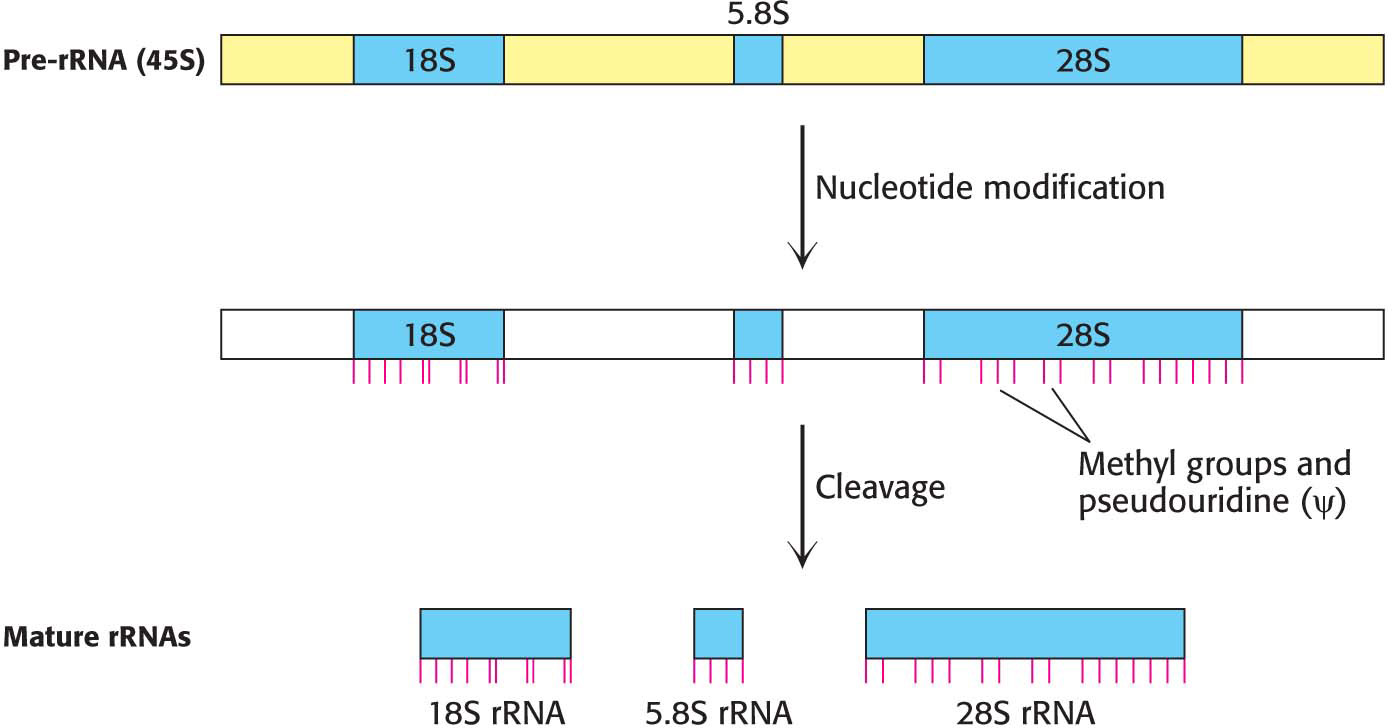38.1 Mature Ribosomal RNA Is Generated by the Cleavage of a Precursor Molecule
RNA polymerase I transcription results in a single precursor (45S in mammals) that encodes three RNA components of the ribosome: the 18S rRNA, the 28S rRNA, and the 5.8S rRNA (Figure 38.1). The 18S rRNA is the RNA component of the small ribosomal subunit (40S), and the 28S and 5.8S rRNAs are two RNA components of the large ribosomal subunit (60S). The other RNA component of the large ribosomal subunit, the 5S rRNA, is transcribed by RNA polymerase III as a separate transcript.

Figure 38.1: The processing of eukaryotic pre-rRNA. The mammalian pre-rRNA transcript contains the RNA sequences destined to become the 18S, 5.8S, and 28S rRNAs of the small and large ribosomal subunits. First, nucleotides are modified (indicated by red lines). Next, the pre-rRNA is cleaved and packaged to form mature ribosomes in a highly regulated process in which more than 200 proteins take part.
The cleavage of the precursor into three separate rRNAs is actually the final step in its processing. Prior to cleavage, two other modifications occur. First, the nucleotides of the pre-rRNA sequences destined for the ribosome undergo extensive modification, on both ribose and base components, directed by many small nucleolar ribonucleoproteins (snoRNPs), each of which consists of one small nucleolar RNA (snoRNA) and several proteins. Next, the pre-rRNA is assembled with ribosomal proteins in a large ribonucleoprotein. Cleavage of the pre-rRNA (sometimes coupled with additional processing steps) releases the mature rRNAs assembled with ribosomal proteins as ribosomes. Like those of RNA polymerase I transcription itself, most of these processing steps take place in the cell nucleolus, a nuclear subcompartment.
